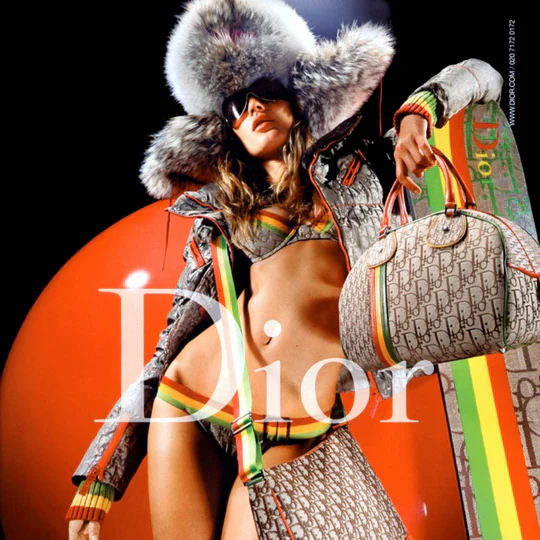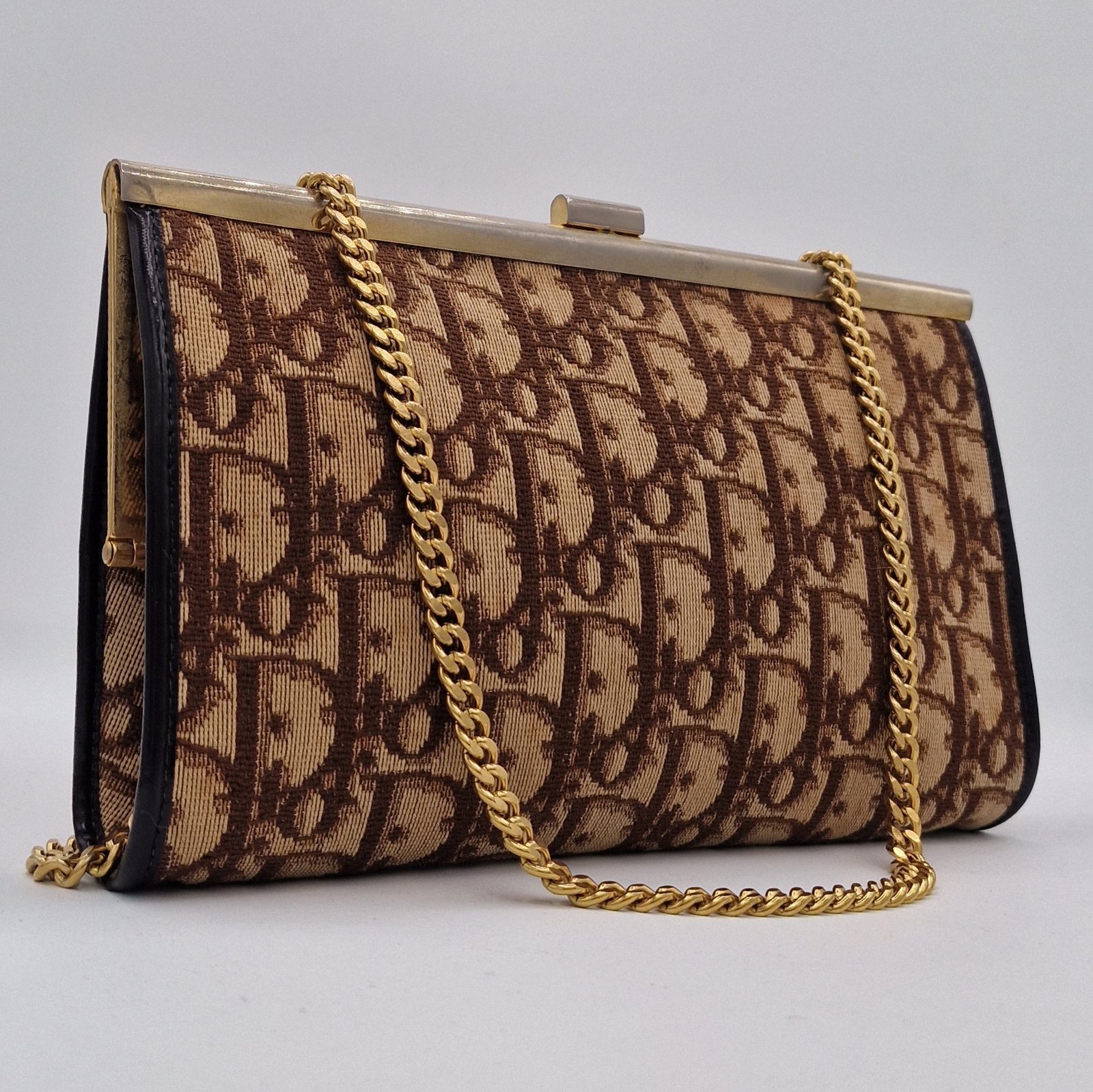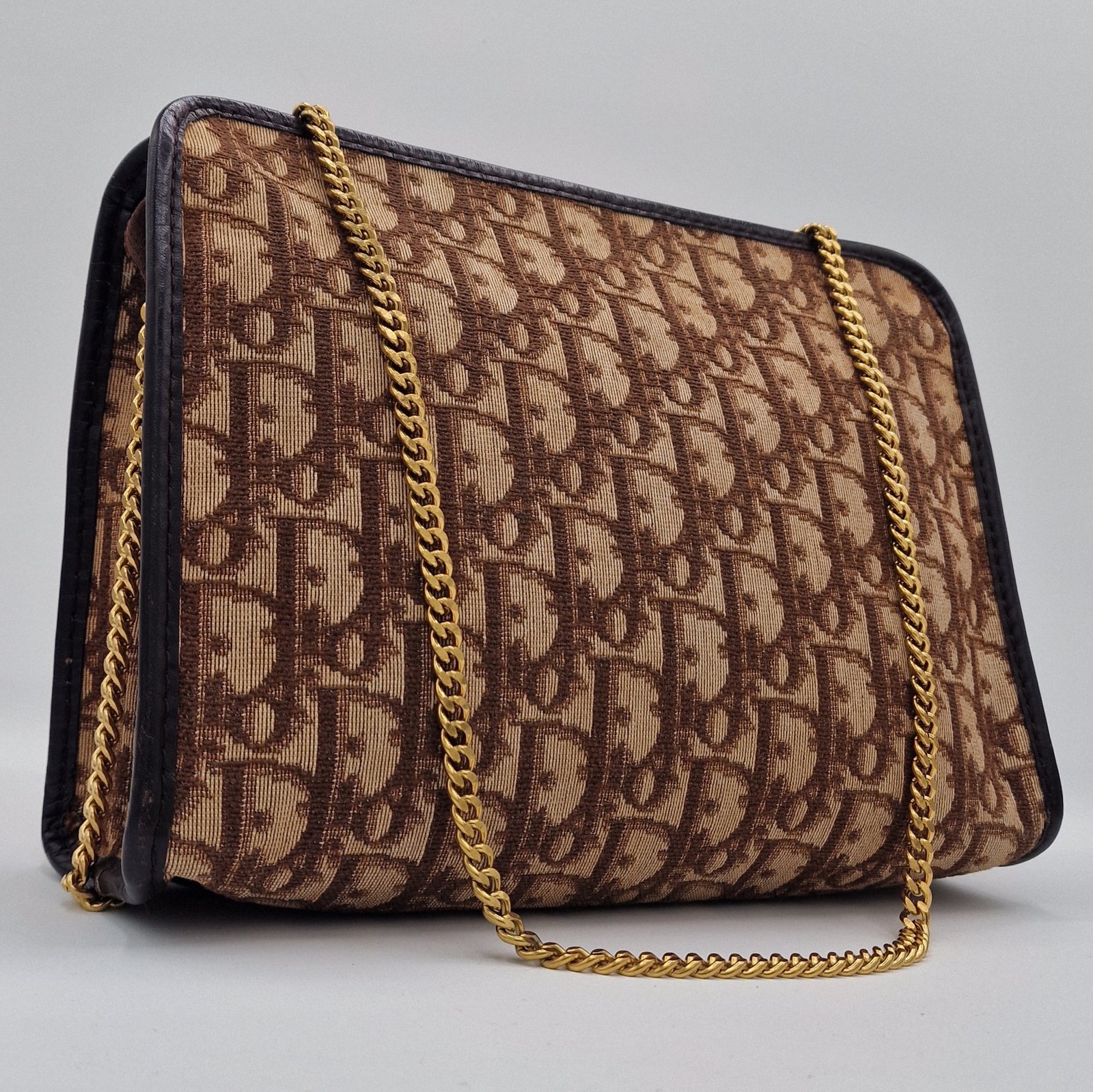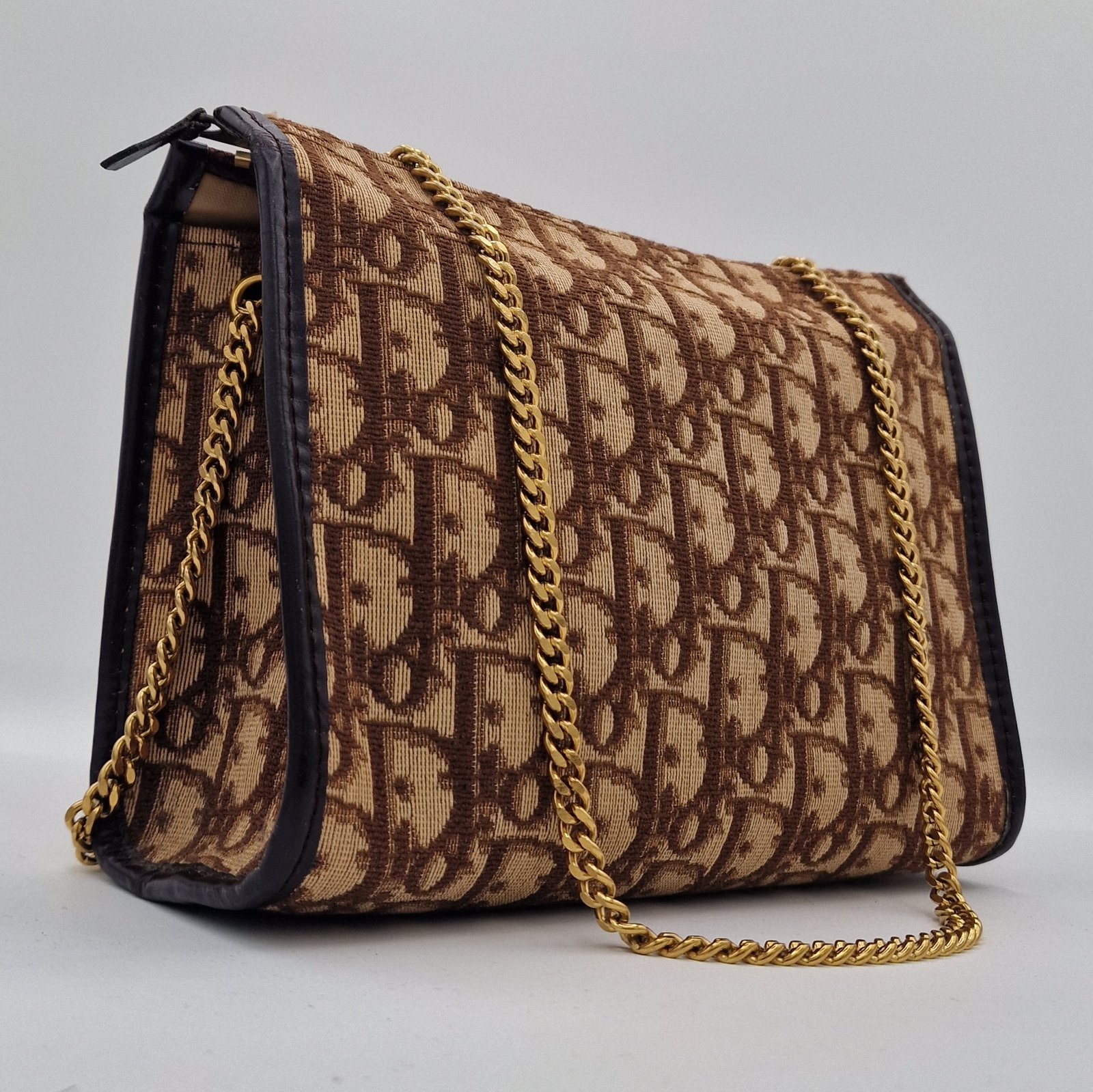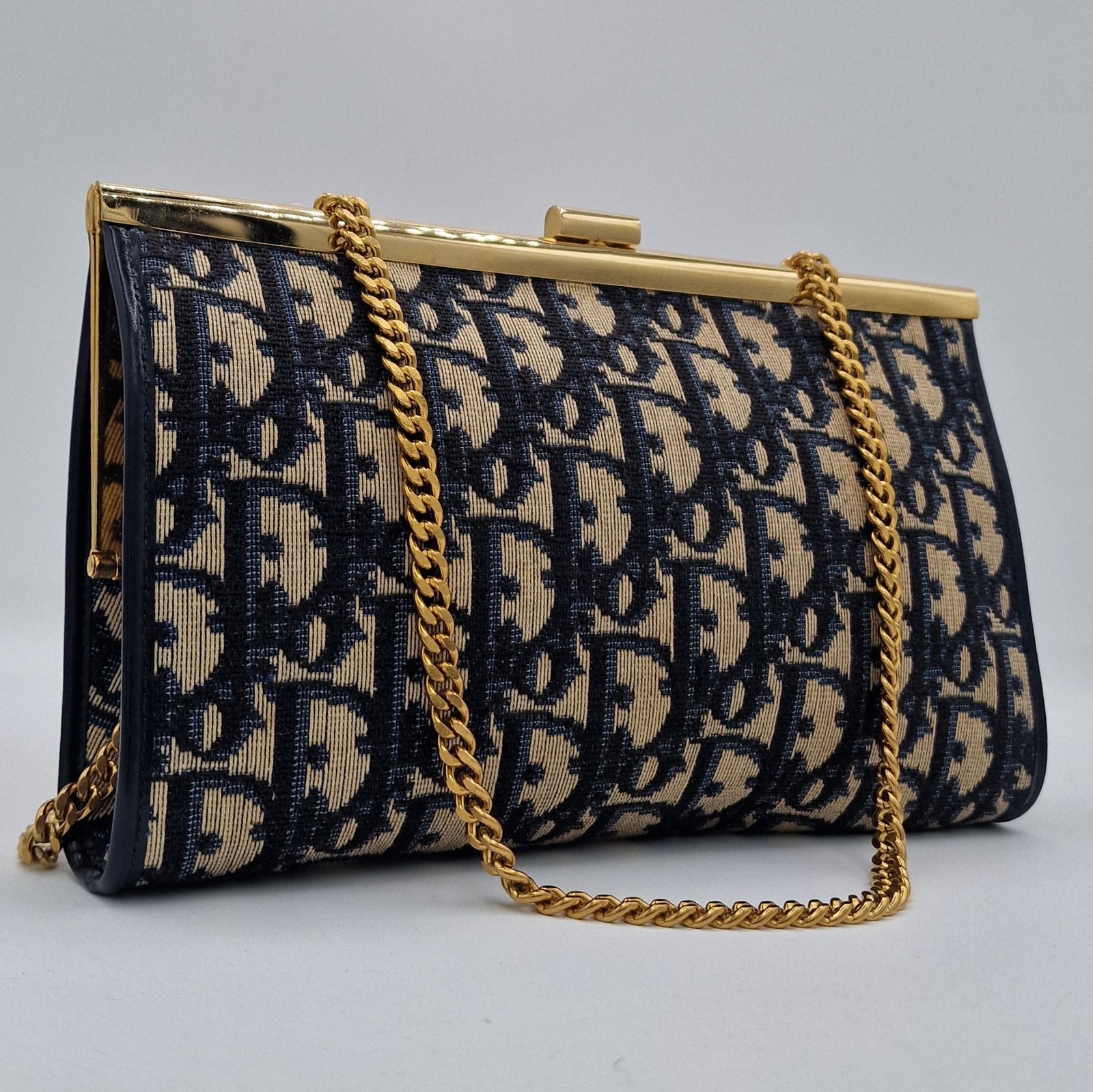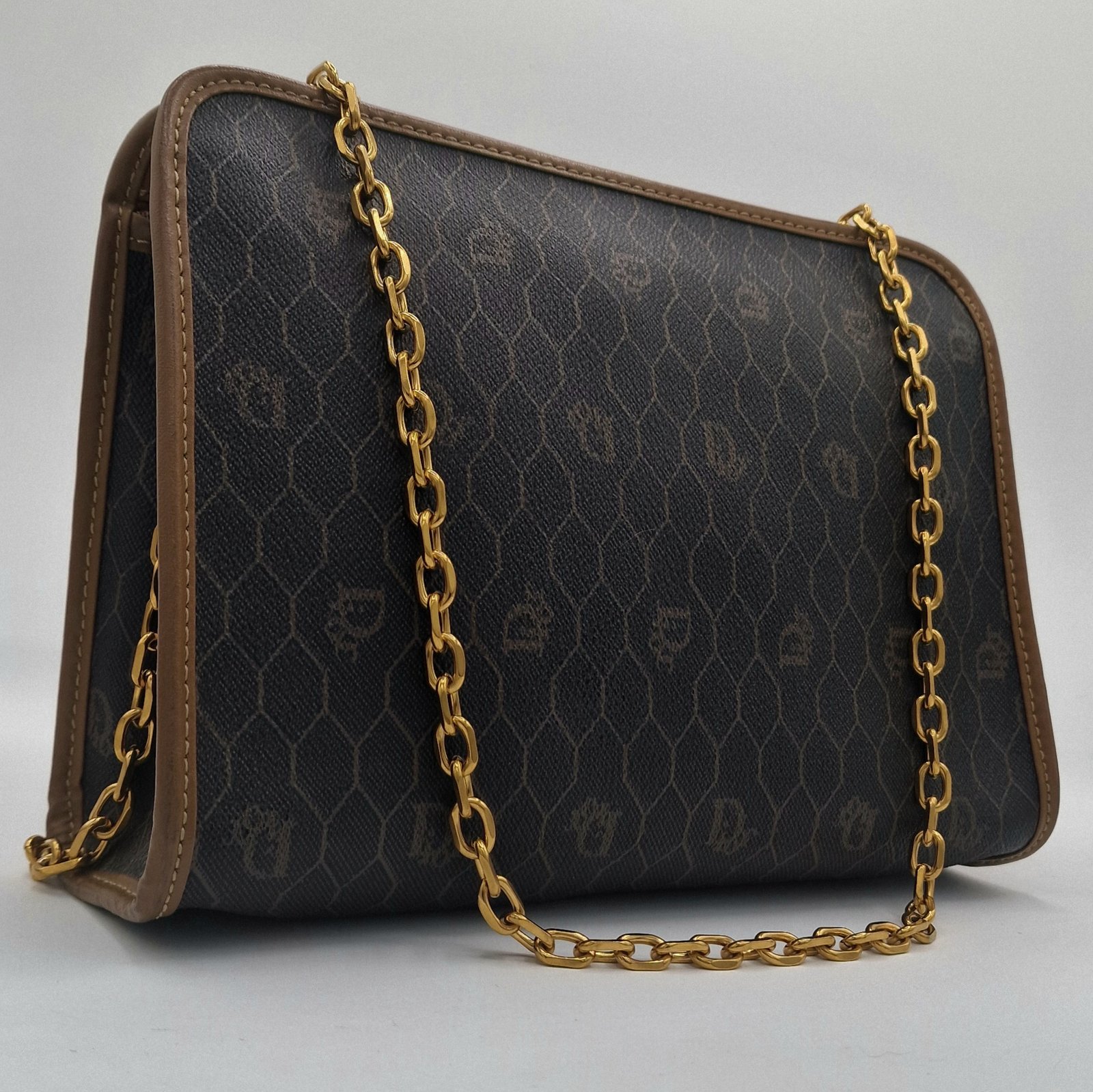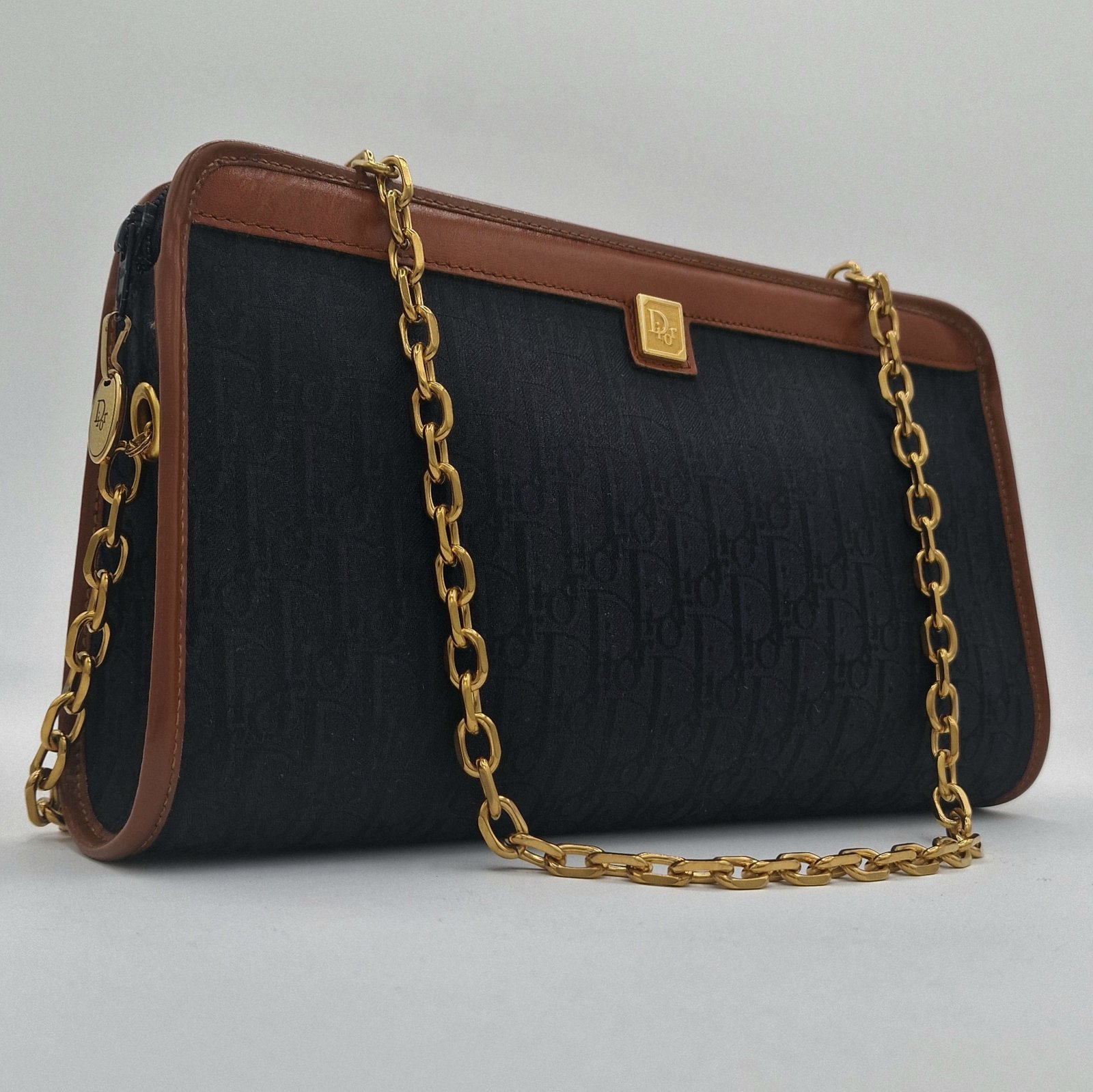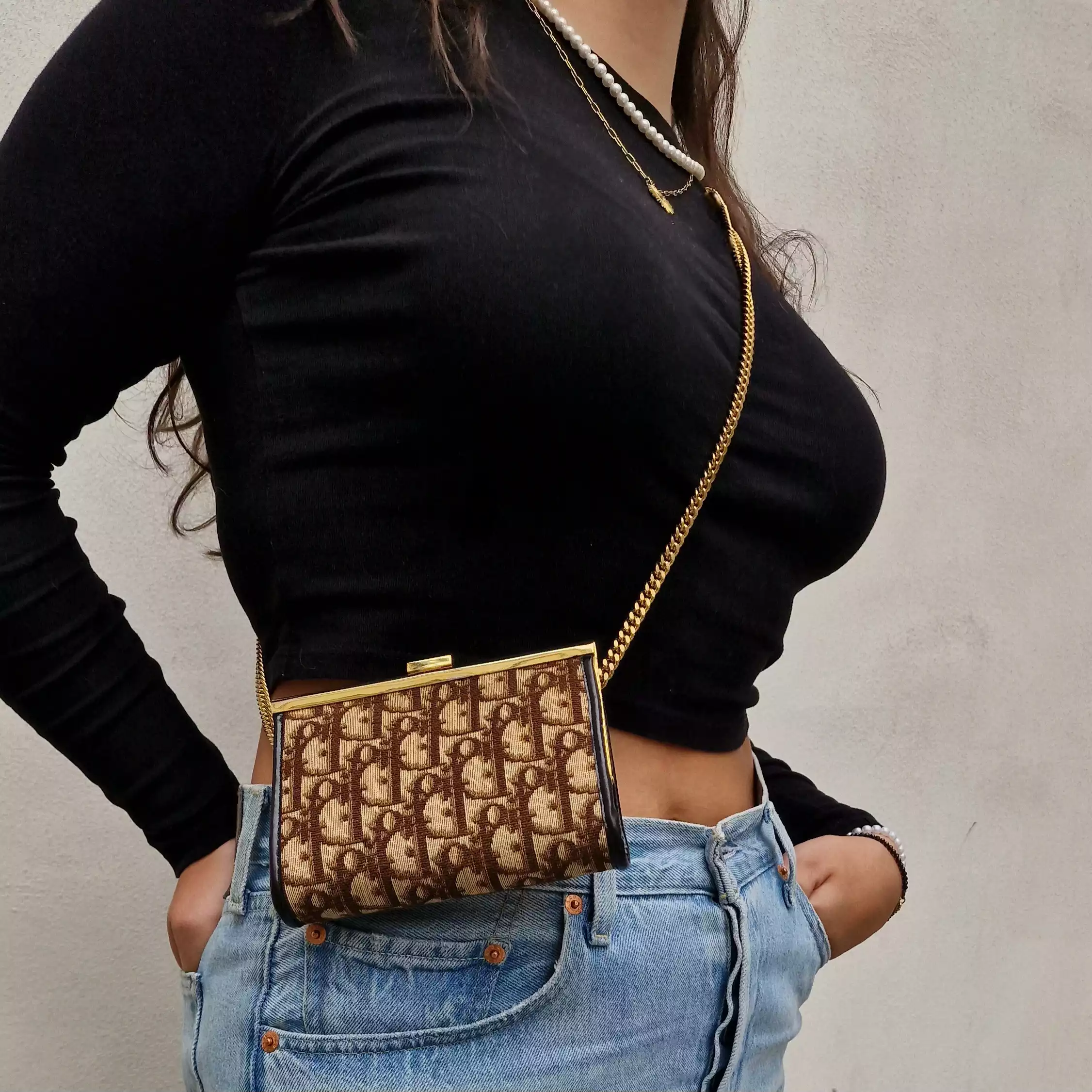Oblique Jacquar pattern, Dior’s key Signature.
Oblique Jacquard pattern,
Dior's key signature
The oblique jacquard pattern, a key signature of the House of Dior, is an element that has stood the test of time while remaining deeply linked to the brand's identity. But what is the origin of this motif and how has it evolved over time?
The beginnings of the jacquard pattern at Dior
The history of the oblique jacquard pattern dates back to the first collections by Christian Dior, the designer who founded the house.
In 1947, when he presented his famous New Look, Dior revolutionised fashion by imposing a sensual feminine silhouette, marked by a cinched waist and full skirts. It was at this time that the jacquard pattern, already used in textiles since the early 19th century, began to appear in the house’s collections.
Jacquard, a complex weaving technique that allowed patterns to be created directly in the fabric, became a way for Dior to sign its creations with discreet, refined luxury.
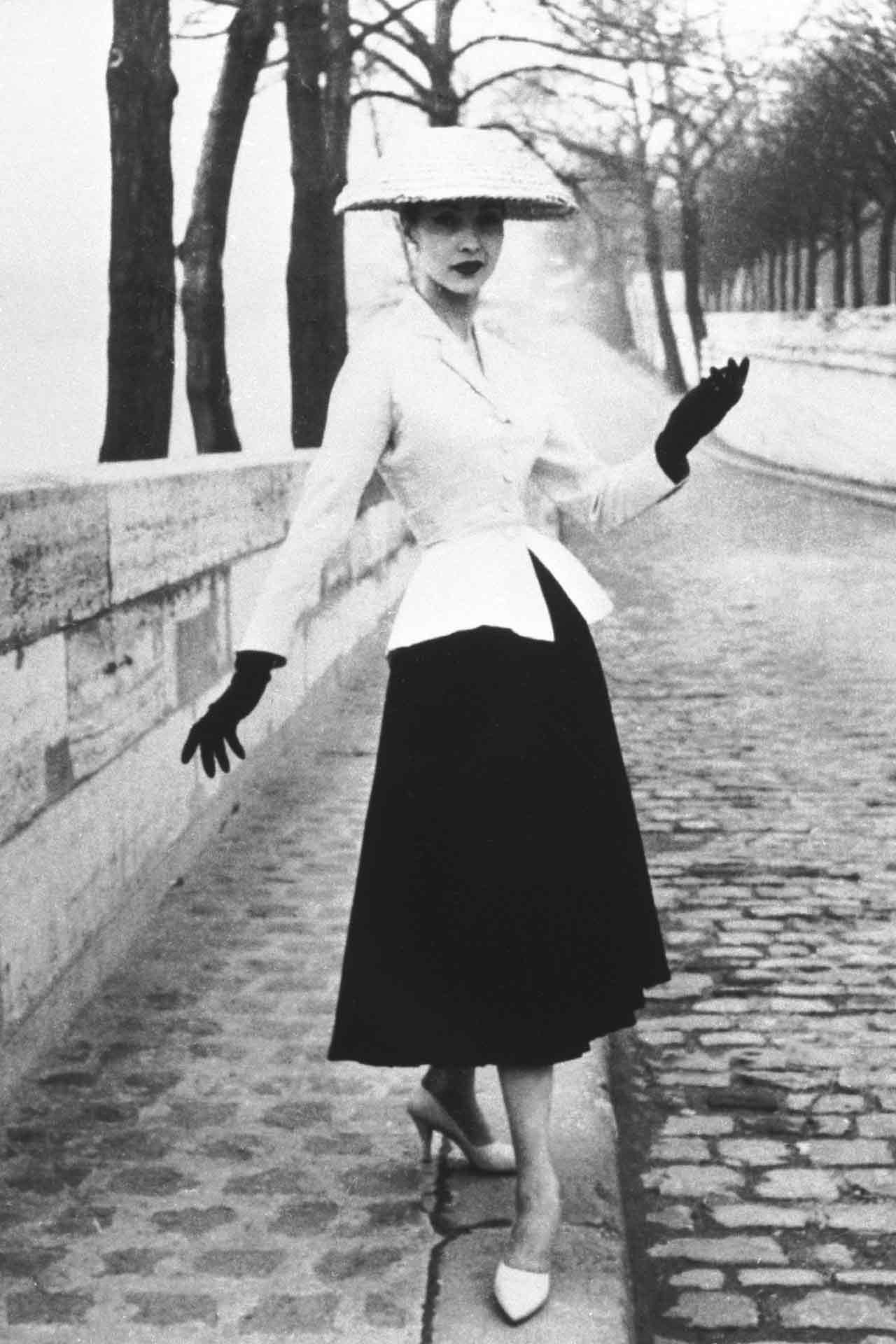
Christian Dior's Bar suit, spring-summer 1947 haute couture collection Associations Willy Maywald / ADAGP 2020
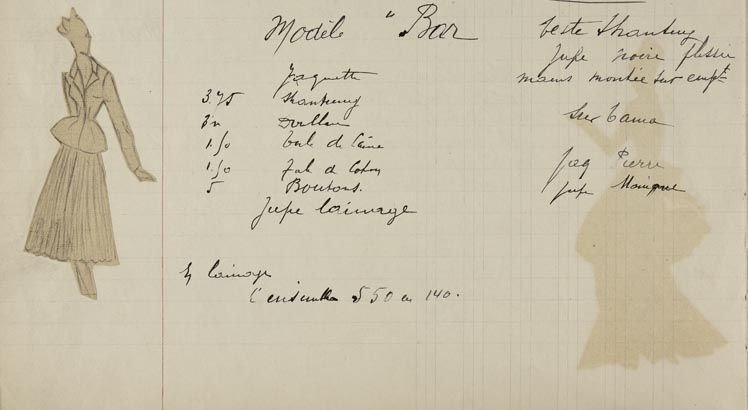
Christian Dior's Bar suit, spring-summer 1947 haute couture collection Associations Willy Maywald / ADAGP 2020
The history of the oblique jacquard pattern dates back to the first collections by Christian Dior, the designer who founded the house.
In 1947, when he presented his famous New Look, Dior revolutionised fashion by imposing a sensual feminine silhouette, marked by a cinched waist and full skirts. It was at this time that the jacquard pattern, already used in textiles since the early 19th century, began to appear in the house’s collections.
Jacquard, a complex weaving technique that allowed patterns to be created directly in the fabric, became a way for Dior to sign its creations with discreet, refined luxury.
The appearance of the oblique motif
The iconic oblique pattern as we know it today first appeared in the 1960s, under the direction of Marc Bohan, who succeeded Christian Dior after his death in 1957.
This diagonal pattern, often seen in shades of beige and blue, was imagined to reflect the modern elegance of the house while reinforcing its distinctive character.
The oblique pattern is created using the jacquard weaving technique, but is distinguished by its dynamic geometric structure, which offers a sense of movement.
It has quickly become one of Dior’s most recognisable symbols, representing both timeless luxury and a certain modernity. The use of this motif allows the house to stand out from its competitors while remaining true to Christian Dior’s legacy of understated yet unforgettable elegance.
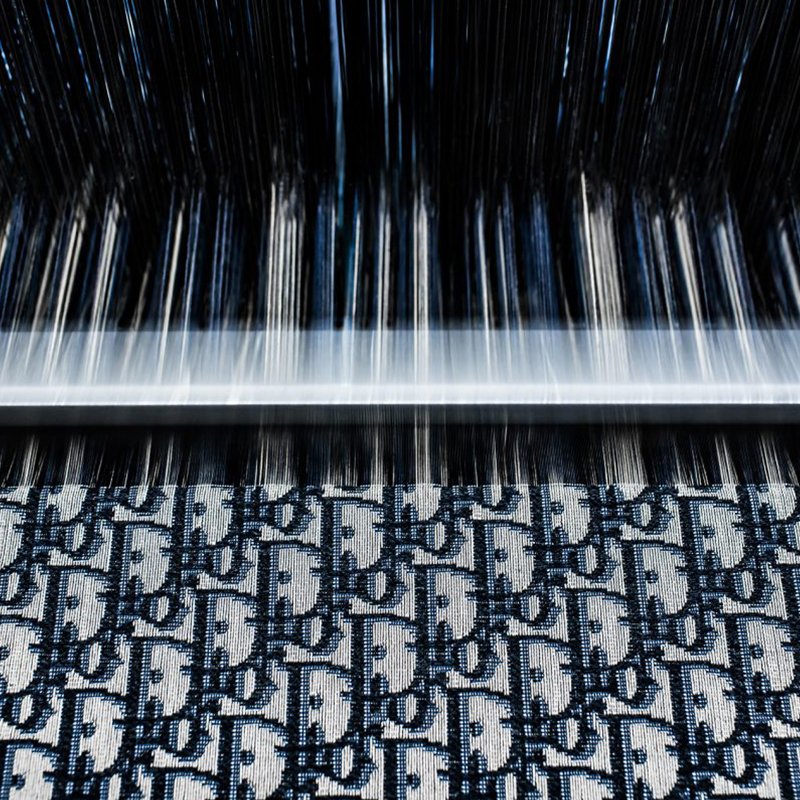
Weaving mill, jacquard fabric with Oblique pattern
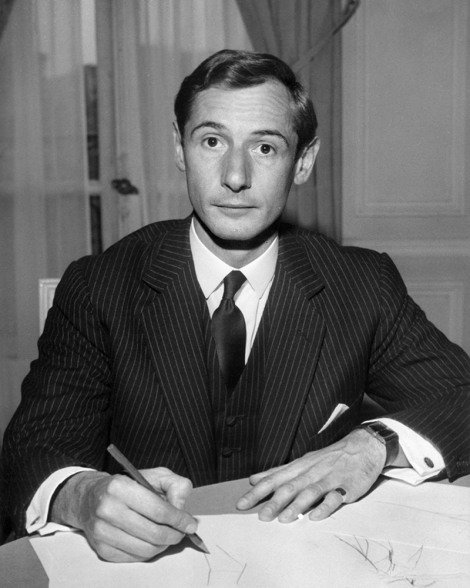
Marc Bohan, artistic director from 1961 to 1989.
The iconic oblique pattern as we know it today first appeared in the 1960s, under the direction of Marc Bohan, who succeeded Christian Dior after his death in 1957.
This diagonal pattern, often seen in shades of beige and blue, was imagined to reflect the modern elegance of the house while reinforcing its distinctive character.
The oblique pattern is created using the jacquard weaving technique, but is distinguished by its dynamic geometric structure, which offers a sense of movement.
It has quickly become one of Dior’s most recognisable symbols, representing both timeless luxury and a certain modernity. The use of this motif allows the house to stand out from its competitors while remaining true to Christian Dior’s legacy of understated yet unforgettable elegance.
The evolution of the motif under the direction of John Galliano
In the 1990s, with the arrival of John Galliano as artistic director of Dior, the oblique jacquard pattern enjoyed a new lease of life.
The designer, known for his flamboyant creativity, revisited the motif in avant-garde and more daring collections.
He incorporated it into both ready-to-wear and haute couture collections, using it on garments as well as accessories such as handbags and shoes.
The oblique motif, while retaining its classic roots, is reinterpreted in a modern spirit, blending perfectly with Galliano’s world.
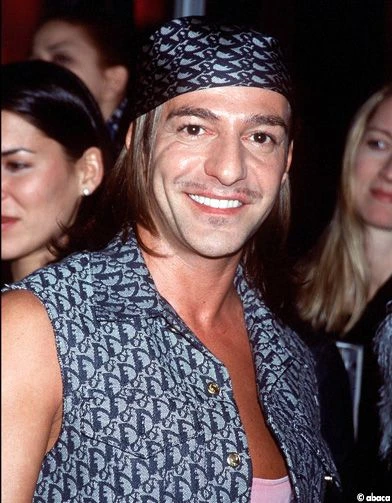
John Galliano, artistic director from 1996 to 2011.
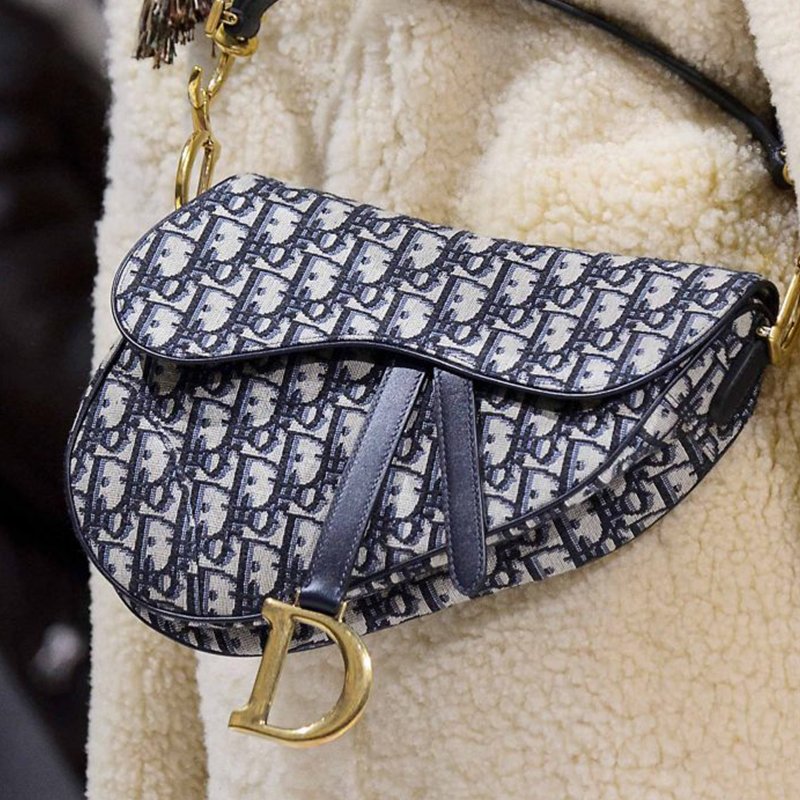
Dior Saddle bag, a brand essential
In the 1990s, with the arrival of John Galliano as artistic director of Dior, the oblique jacquard pattern enjoyed a new lease of life.
The designer, known for his flamboyant creativity, revisited the motif in avant-garde and more daring collections.
He incorporated it into both ready-to-wear and haute couture collections, using it on garments as well as accessories such as handbags and shoes.
The oblique motif, while retaining its classic roots, is reinterpreted in a modern spirit, blending perfectly with Galliano’s world.
A symbol of elegance and modernity
Today, under the direction of Maria Grazia Chiuri, the House of Dior continues to bring this iconic motif to life. The contemporary version of the oblique jacquard, sometimes reinterpreted in monochrome or in new colour palettes, remains a symbol of luxury, elegance and refinement.
It has been adapted to a variety of products, from accessories to clothing, from bags to scarves, and continues to appeal to a demanding clientele looking for fashion that is both timeless and resolutely modern.
Dior’s oblique jacquard pattern embodies the spirit of the house: a fusion of tradition and innovation.
It is an example of how a simple pattern can become a central element of a fashion brand’s visual identity, while remaining true to its values of sophistication and creativity.
Today, under the direction of Maria Grazia Chiuri, the House of Dior continues to bring this iconic motif to life. The contemporary version of the oblique jacquard, sometimes reinterpreted in monochrome or in new colour palettes, remains a symbol of luxury, elegance and refinement.
It has been adapted to a variety of products, from accessories to clothing, from bags to scarves, and continues to appeal to a demanding clientele looking for fashion that is both timeless and resolutely modern.
Dior’s oblique jacquard pattern embodies the spirit of the house: a fusion of tradition and innovation.
It is an example of how a simple pattern can become a central element of a fashion brand’s visual identity, while remaining true to its values of sophistication and creativity.
